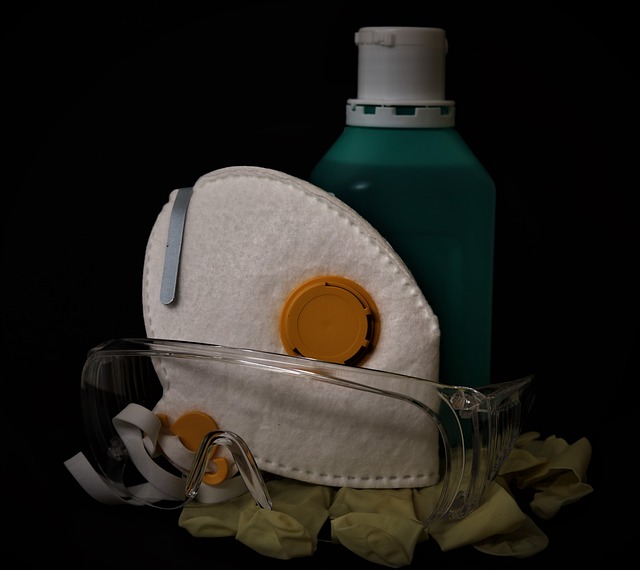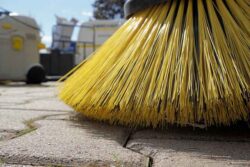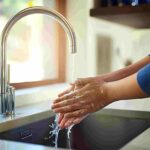
Hurricane season can be a daunting and potentially dangerous time for those living in areas prone to these powerful storms. The Atlantic hurricane season typically runs from June to November, and being prepared is key to ensuring the safety of your home and loved ones. In this comprehensive guide, we’ll walk you through the essential steps to prepare your home for hurricane season, with a specific focus on cleaning and safety measures. From creating a hurricane emergency kit to fortifying your home against the elements, this article covers everything you need to know to protect your property and family.
It’s also crucial to understand the potential threats hurricanes pose. These storms can bring heavy rain, strong winds, storm surges, and flooding, causing significant damage to homes and infrastructure. Hurricane categories range from Category 1 (weakest) to Category 5 (strongest), with Category 3 and above considered major hurricanes. Hurricane season typically spans from June 1st to November 30th, with peak activity occurring in August and September. Coastal regions, especially those along the Atlantic and Gulf of Mexico, are most susceptible to hurricane threats. However, hurricanes can impact areas far inland, so it’s crucial for all residents in potentially affected regions to be prepared. Here are some key points to keep in mind:
1. Evacuation Plans
If you live in an area prone to hurricanes, be aware of local evacuation plans and routes. Familiarize yourself with the designated storm shelters and evacuation centers in your community.
2. Preparedness is Key
Being prepared well in advance of a hurricane is critical. This includes having an emergency kit, securing your home, and having a family emergency plan in place.
3. Stay Informed
Keep an eye on weather updates and follow the guidance of local authorities. Hurricane tracks and intensity can change rapidly, so staying informed is essential.
Preparing Your Home: Cleaning and Safety Measures
When it comes to hurricane preparedness, taking steps to protect your home is of paramount importance. Here’s a comprehensive guide to help you get your home ready for hurricane season.
1. Create a Hurricane Emergency Kit
A hurricane emergency kit should be one of your top priorities. It should contain essential supplies to sustain you and your family in case of power outages or an emergency evacuation. Here’s what you should include:
- Non-perishable food: Canned goods, dried fruits, and high-energy snacks.
- Water: At least one gallon of water per person per day for a minimum of three days.
- First-aid kit: Include bandages, antiseptic wipes, pain relievers, and any necessary prescription medications.
- Flashlights: Ensure you have extra batteries.
- Battery-operated or hand-crank radio: Keep up-to-date with weather alerts.
- Personal hygiene items: Toothbrush, toothpaste, soap, and sanitary supplies.
- Multipurpose tool or knife.
- Cell phone with chargers: Consider a solar-powered charger.
- Cash: ATMs may not be operational during power outages.
- Important documents: Keep copies of identification, insurance policies, and medical records.
- Blankets or sleeping bags.
2. Trim Trees and Remove Debris
Trees and debris can become dangerous projectiles during a hurricane. Prune overhanging branches and remove dead or weak trees to prevent them from falling on your home during high winds.
3. Secure Outdoor Furniture
Outdoor furniture, toys, and other items in your yard can become hazardous during a hurricane. Secure or store them indoors to prevent them from causing damage or injury.
4. Reinforce Windows and Doors
Hurricane-force winds can shatter windows and doors, allowing wind and rain to enter your home. Consider the following measures to reinforce them:
- Install hurricane shutters: These specially designed shutters provide an extra layer of protection.
- Use plywood: If hurricane shutters are not an option, you can board up windows and glass doors with plywood.
- Apply window film: Window film strengthens glass and can prevent shattering.
- Reinforce garage doors: High winds can easily blow in garage doors. Reinforce them or install a brace kit.
5. Check Your Roof
Inspect your roof for loose or damaged shingles. Repair or replace them as needed to prevent water from entering your home. Consider securing the roof with hurricane straps or clips, which can help prevent it from being lifted during strong winds.
6. Clean Gutters and Downspouts
Clear your gutters and downspouts of leaves and debris to ensure proper water drainage during heavy rainfall. Clogged gutters can lead to water damage and flooding.
7. Elevate Electrical Systems
If your home is in a flood-prone area, elevate electrical systems, including outlets, switches, and circuit breakers, to prevent water damage. Ensure that all electrical systems are in good working condition.
8. Reinforce Your Garage
Garages are often vulnerable during hurricanes. Reinforce your garage door, and if possible, park your vehicles inside. A damaged garage door can allow strong winds to enter your home.
9. Secure Heavy Appliances
Heavy appliances like refrigerators and freezers should be secured to prevent them from toppling during a storm. Use safety straps or brackets to secure them to the walls or the floor.
10. Install Sump Pumps
If your home is prone to flooding, consider installing a sump pump in your basement. This can help remove excess water and prevent costly water damage.
11. Have an Emergency Power Source
A backup generator or portable power source can be invaluable during a power outage. Make sure you have enough fuel and know how to operate the generator safely.
12. Plan for Evacuation
In some cases, evacuating your home is the safest option. Prepare a “go bag” that includes essential items such as your emergency kit, important documents, and a change of clothes. Also, make sure your vehicle is fueled and in good working condition.
Preparing for After the Storm
Hurricane preparedness doesn’t end when the storm passes. After the hurricane, it’s important to assess the damage and take necessary steps to ensure your safety and well-being:
1. Wait for the All-Clear
Don’t venture outside until local authorities have issued an all-clear signal. Dangerous conditions may persist, including downed power lines and flooded streets.
2. Check for Gas Leaks
If you suspect a gas leak, turn off the gas supply to your home and leave immediately. Do not use open flames, including candles, until the gas supply is confirmed to be safe.
3. Be Cautious with Electricity
Be extremely cautious when dealing with electricity after a hurricane. Never enter a flooded area with electrical appliances or outlets. If your home has sustained water damage, have an electrician inspect your wiring before turning the power back on.
4. Inspect for Damage
Carefully inspect your home for damage. Check for leaks, broken windows, and structural damage. If you suspect any structural issues, do not enter the building until it has been deemed safe.
5. Prevent Mold
Mold can begin to grow quickly after a hurricane due to moisture and flooding. Remove wet carpet, insulation, and other materials to prevent mold growth. Use fans and dehumidifiers to help dry out the area.
6. Stay Informed
Continue to monitor weather updates and stay informed about local conditions. Additional rainfall or flash floods can occur in the aftermath of a hurricane.
7. Contact Your Insurance Company
Contact your insurance company to report any damage to your home. Document the damage with photographs and keep all related paperwork and receipts.
8. Help Your Community
If you are safe and able to do so, consider helping your neighbors and community. Offer assistance to those who may be more vulnerable or in need.
Conclusion
Preparing your home for hurricane season involves a combination of thorough cleaning and safety measures. While you can’t control the weather, you can control how well you prepare for potential hurricane threats. By following the steps outlined in this guide, you can significantly reduce the risks associated with hurricanes and increase your chances of protecting your home and family.
Remember that hurricane preparedness is an ongoing process that requires vigilance and adaptability. Stay informed, keep your emergency supplies up to date, and be ready to take action when necessary. With the right preparation, you can face hurricane season with confidence and ensure the safety and security of your home and loved ones.







